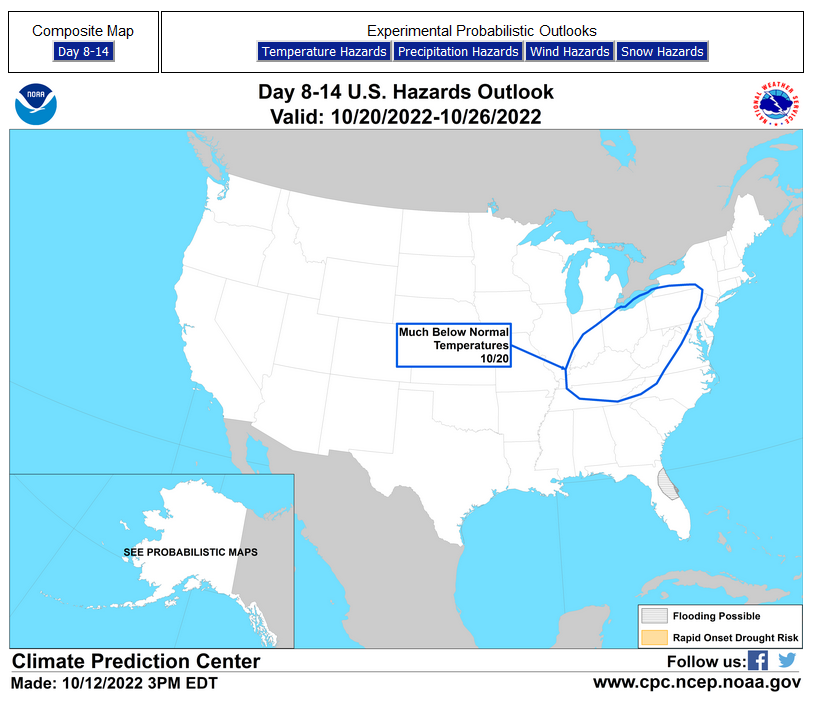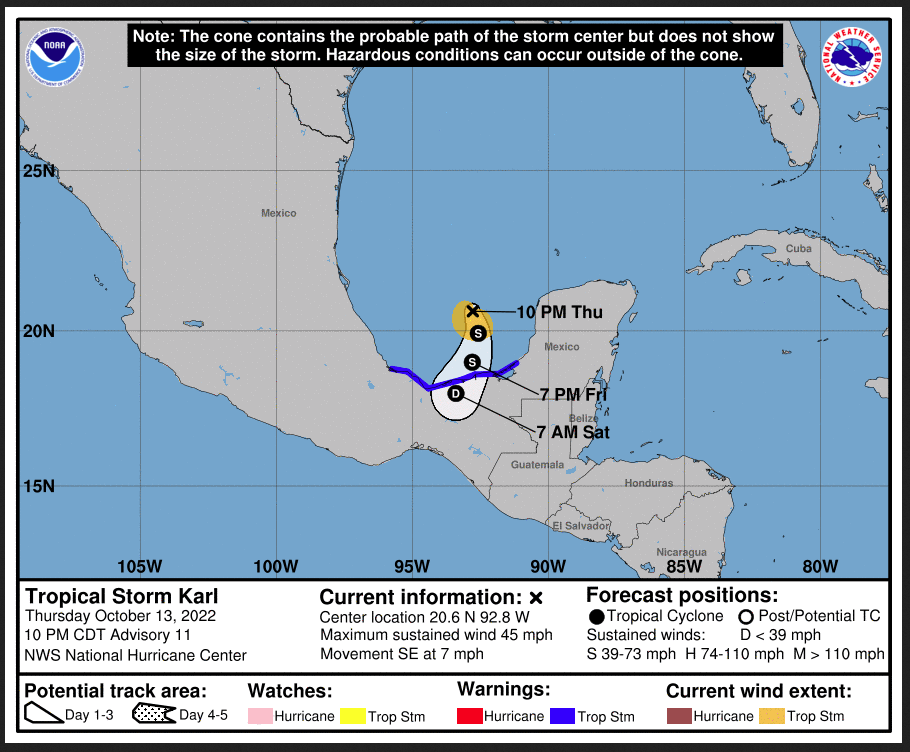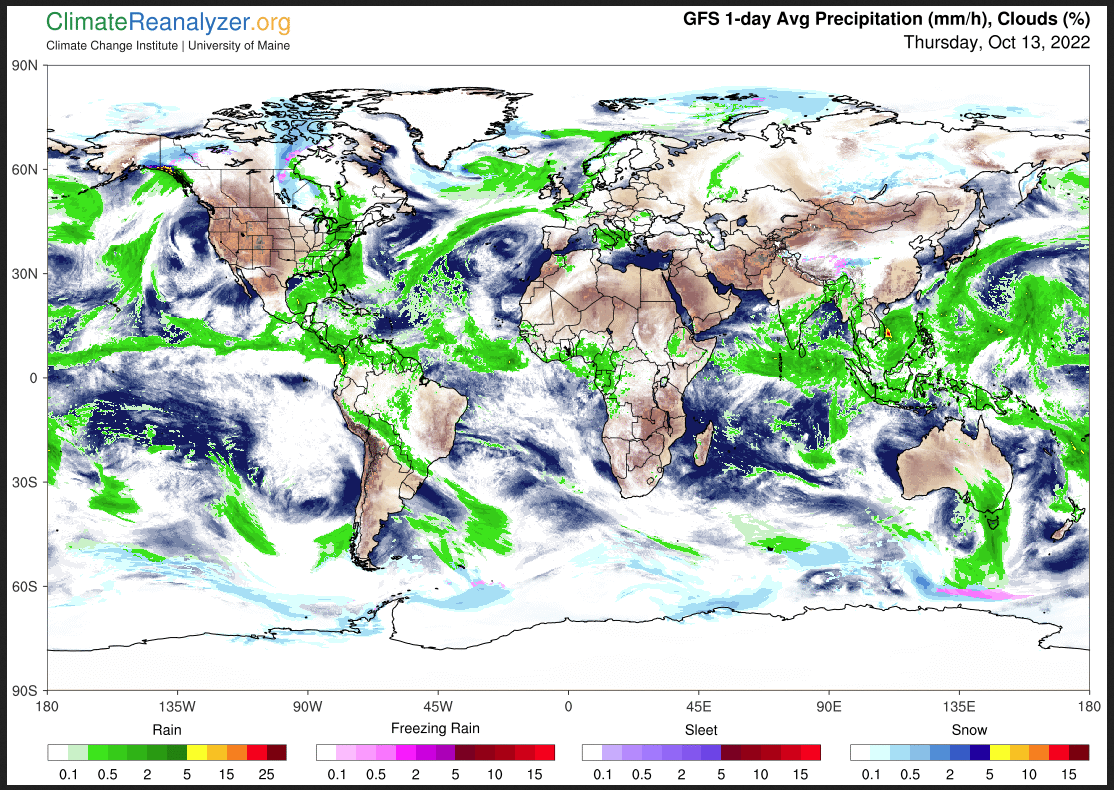Here is what we are paying attention to this evening and the next 48 hours from this afternoon’s NWS Forecast.
...Heavy Rain and Flash Flooding expected for portions of the Northeast through Friday... ...Flash Flooding concerns shift to the Southwest this weekend... ...Critical Fire Weather conditions for portions of the Northern/Central Plains and Mid-Mississippi Valley through Friday...
Continuation of the NWS Short Range Forecast (It is updated twice a day and these updates can be found here.
Over the next few days a series of cold fronts are expected to move southeast across the Central and Eastern US. Precipitation will be focused ahead of and along each front while waves of colder, drier air move in behind each front. The first cold front has already crossed the Central US and is continuing its journey across the Eastern US. This front is expected to push offshore into the Atlantic on Friday but linger over Maine through Saturday. Widespread showers and thunderstorms are expected ahead of and along the front in the Northeast. Heavy rainfall may result in isolated to scattered areas of flash flooding. There is a Slight Risk of Excessive Rainfall (level 2/4) for portions of the Northeast through Friday. Flooding will be focused in urban areas and areas with poor drainage and may be exacerbated by fallen leaves clogging drains. A second cold front will move south across the Northern and Central Plains and Upper Midwest on Friday and produce light snow over the Upper Mississippi Valley and Upper Great Lakes region. The frontal boundary is expected to move southeast and extend from the Mid-Atlantic region to the Southwest this weekend. Meanwhile, an upper level low will be gradually moving eastwards across the Southwest this weekend, which will provide enhanced support for shower and thunderstorm development. Surface and upper level support for precipitation in the Southwest this weekend could result in heavy rainfall and potential flash flooding. There is a Slight Risk of Excessive Rainfall (level 2/4) in effect for portions of Arizona and southern California on Saturday with a Marginal Risk of Excessive Rainfall (level 1/4) for much of the rest of southern California, Arizona, and New Mexico. A Slight Risk of Excessive Rainfall (level 2/4) is also expected on Sunday across portions of Arizona, New Mexico, and Texas. Flash floods will be especially dangerous near steep terrain, slot canyons, and burn scars. A third cold front is expected to move south across the Northern Plains this weekend. All three fronts will support continued windy and dry conditions across the Central US. Strong wind gusts, low relative humidity, and dry soils will combine to produce dangerous fire weather conditions. The Storm Prediction Center has highlighted an area of Critical fire weather conditions for portions of the Northern and Central Plains and Mid-Mississippi Valley through Friday. Red Flag Warnings are in effect for much of the Plains and Mid-Mississippi Valley where rapid wildfire spread will be possible, those affected should listen to local officials for fire safety information. The series of cold fronts will support cooler than normal temperatures for the Eastern US through Friday and much of the Central US through the weekend. On Friday, high temperatures are forecast to be in the upper 30s and 40s in the Upper Midwest, and a few places may experience record low maximum temperatures for this time of year. While much of the US cools down, high pressure and heat will build over the Pacific Northwest. High temperatures are forecast to be in the 70s and 80s across Washington and Oregon through the weekend, and some locations may experience record high maximum temperatures for this time of year.
Current forecast of heavy precipitation (Updates can be found HERE)
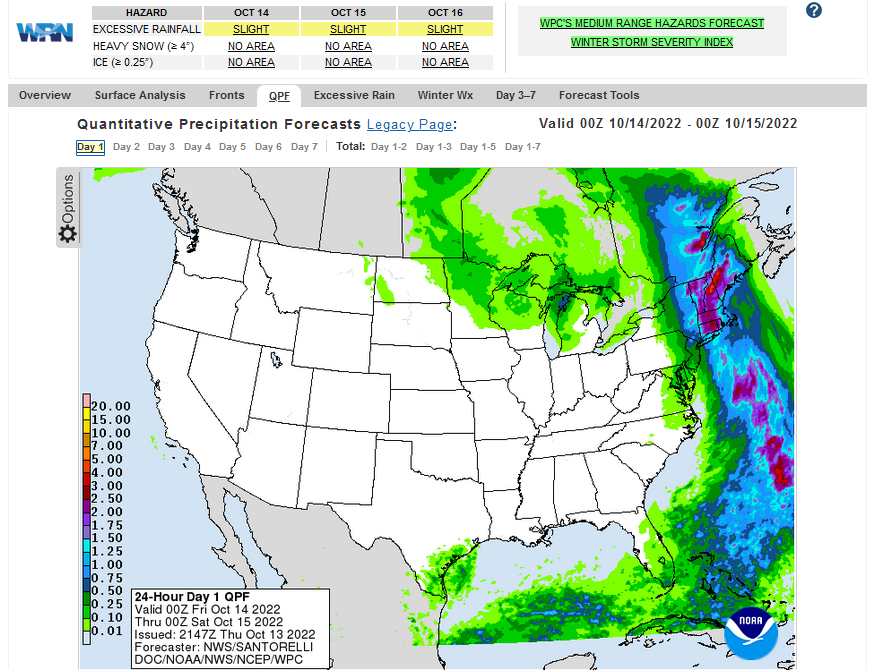 Maps that relate the forecast to geography can be found by clicking Here for Day 1 and Here for Day 2.
Maps that relate the forecast to geography can be found by clicking Here for Day 1 and Here for Day 2.
Here is a 60-hour animated forecast map that shows how the short-term forecast is expected to play out
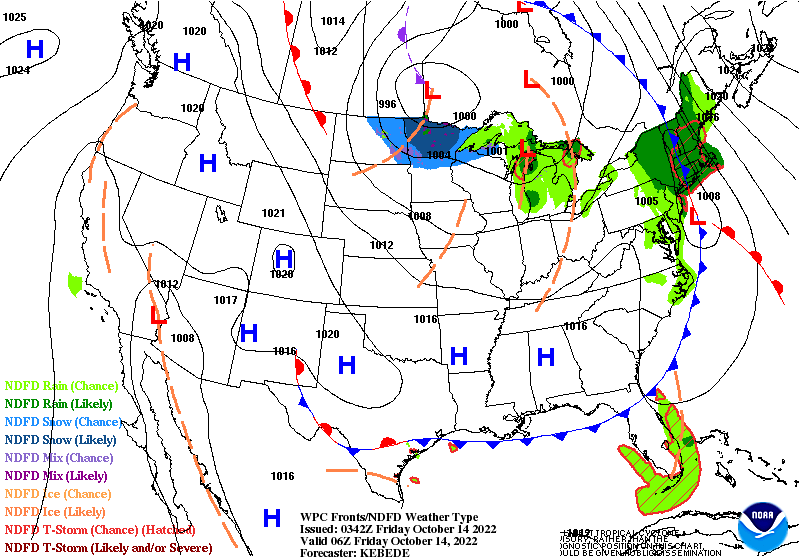 If it needs to be updated click here.
If it needs to be updated click here.
HAZARDS OUTLOOKS
Click here for the latest complete Day 3 -7 Hazards forecast which updates only on weekdays. Once a week probably Monday or Tuesday I will update the images. I provided the link for readers to get daily updates on weekdays. Use your own judgment to decide if you need to update these images.
Worldwide Tropical Forecast
(This graphic updates on Tuesdays) If it has not been updated, you can get the update by clicking here This is a new approach and covers weeks 2 and 3 not weeks 1 and 2. It has more information but I am having trouble getting used to it. As usual, it comes with a discussion which is below
Detailed Maps and Reports for the Western Atlantic and the Pacific Oceans
Below are four maps that summarize the situation for the Atlantic, Eastern, Central Pacific, and Western Pacific. Additional information can be accessed by clicking HERE
First the Atlantic
Click to view the forecast map and have access to additional information https://www.nhc .noaa.gov/gtwo.php?basin= atlc&fdays=5
Then Eastern Pacific
Click to view the forecast map and have access to additional information https://www.nhc.noaa.gov/gtwo.php?basin=epac&fdays=5
Then Central Pacific
Click to view the forecast map and have access to additional information https://www.nhc.noaa.gov/gtwo.php?basin=cpac&fdays=5
And the Western Pacific
Click to view the forecast map and have access to additional information https://www.metoc.navy.mil/jtwc/jtwc.html
Some Intermediate-Term Outlooks
Links to “Outlook” maps and discussions for three time periods. Days 6 – 10, Days 8 – 14, and Weeks 3 and 4. An outlook differs from a forecast based on how NOAA uses these terms in that an “outlook” presents information from deviation from normal and the likelihood of these deviations.
You have to click on the links because they do not update automatically and I do not want to have stale images in the article. But it is not difficult to click on a link and you get a large image plus a discussion. On Fridays in a separate article, we will show the images and provide a link in this article that article. But remember what you will see is the images as of Friday. But here you can get the current images simply by clicking on them. Then hit the return arrow at the upper left of your screen to return to the article. You will not find this information easily anywhere else.
Right now you can find these maps here (We show them every Friday there but you can click above and find them).
Worldwide Weather
Below is the current or short-term precipitation forecast which can be updated by clicking HERE Additional maps can be obtained H ERE.
 Month to Date Information
Month to Date Information
Month to date Temperature can be found at https://hprcc.unl.edu/products/maps/acis/MonthTDeptUS.png
Month to date Precipitation can be found at https://hprcc.unl.edu/products/maps/acis/MonthPNormUS.png


